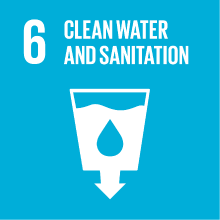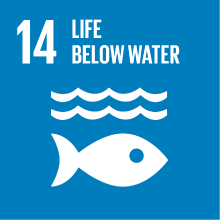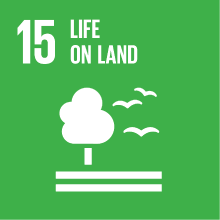BIOMOLECULAR ECOTOXICOLOGY
- Academic year
- 2024/2025 Syllabus of previous years
- Official course title
- ECOTOSSICOLOGIA BIOMOLECOLARE
- Course code
- CM0619 (AF:509784 AR:292436)
- Teaching language
- Italian
- Modality
- On campus classes
- ECTS credits
- 6
- Degree level
- Master's Degree Programme (DM270)
- Academic Discipline
- BIO/11
- Period
- 1st Semester
- Course year
- 1
- Moodle
- Go to Moodle page
Contribution of the course to the overall degree programme goals
The educational objective of the course is to provide knowledge related to:
1) the impact of contaminating substances in the ecosystem with particular reference to different chemical classes;
2) evaluation methods to establish when a contaminant becomes pollutant;
3) forecasting methods to establish the exposure and the effects of pollutants and the estimation of environmental risk.
This knowledge is then used to prepare students to develop essential scientific criteria for governmental authorities for the regulation underlying the preservation of the ecosystem.
Expected learning outcomes
● To know the basic terminology of ecotoxicology and understand the specialized texts in the reference sector.
● To know the interaction of the main classes of contaminants / pollutants with the environment including humans.
● To know the methods to predict the effects of a pollutant in the environment through the evaluation of its chemical-physical properties and the biotic and abiotic components of the ecosystem.
2. Ability to apply knowledge and understanding
1. Knowledge and understanding
● (To know the basic terminology of ecotoxicology and understand the specialized texts in the field of reference.) How to properly use the terminology in all the processes of application and communication of the acquired knowledge .
● (To know the interaction of the main classes of contaminants / pollutants with the environment including humans.) How to operate a simple impact assessment analysis of a pollutant based on its chemical-physical characteristics and the study environment .
● (To know the methods to predict the effects of a pollutant in the environment through the evaluation of its chemical-physical properties and the biotic and abiotic components of the ecosystem.) How to apply predictive methods to evaluate the impact of new synthetic chemicals based on data in the literature.
3. Judgment skills
● Knowing how to formulate and argue simple hypotheses, also developing a critical approach to the evaluation of alternative hypotheses.
4. Communication skills
● How to communicate with appropriate terminology in the field of ecotoxicology.
● How to deal with peers and with the tutor, critically and respectfully, in the classroom to deepen and develop a scientific culture in the field of reference.
5. Learning skills
● How to integrate the contents of the slides shared by the teacher with notes and reference texts.
Pre-requirements
Contents
Contaminant classes: notes on the effects of metals and metalloids; polycyclic aromatic hydrocarbons, polychlorinated biphenyls, polychlorinated terphenyls, polybrominated biphenyls, chlorofluorocarbons, organochlorine pesticides, polychlorinated dibenzodioxins, dibenzofurans, insecticides (organophosphates and carbamates), herbicides (atrazine and 2,4,5-T), organometallic compounds and emerging contaminants (nanomaterials).
Study of the effects of pollutants: fate of pollutants in organisms, molecular effects, acute and chronic toxicity; laboratory tests (aquatic and terrestrial toxicity); Biotic Indexes (freshwater), Bioindicators (animals and plants) and Biomarkers (general, exposure, effect and specific).
Embryo ecotoxicology: embryo detoxification methods; effect of toxic substances at the embryo level, during postnatal development, in adult life and during aging.
Prediction of the effects of pollutants: QSAR (Toxicity based on molecular properties, distribution coefficients and application examples) and Environmental Quality Criteria (European and American experiences and innovative approaches).
Exposure to pollutants: Biogeochemical Cycles, Bioconcentration, Bioaccumulation and Biomagnification, Food Toxicology and Degradation Processes (Resistance, Residence, Biodegradation, Metabolism, Abiotic Degradation).
Exposure forecasting: environmental monitoring and forecasting models; prediction of resistance to degradation (qualitative and quantitative models).
Risk estimation: risk index formulation and application examples.
Referral texts
Mandatory texts
"Marco Vighi and Eros Bacci, Ecotoxicology, UTET, 1998.
"Scott F. Gilbert and David Epel, Ecological Developmental Biology, Sinauer, 2016: (Chapters 5, 6, 7, 8).
Optional texts or supplementary readings
"Michael C. Newman and Michael A. Unger, Fundamental of Ecotoxicology, Lewis Publisher, 2015
Assessment methods
Mastery of Theoretical Topics: Knowledge and understanding of the impact of contaminants on ecosystems, methods for determining when a contaminant becomes a pollutant, and predictive methodologies for assessing exposure, the effects of pollutants, and environmental risk estimation.
Analytical and Practical Application Skills: The candidate's ability to apply theoretical concepts to evaluate specific cases of contamination and pollution, with particular emphasis on exposure and risk assessment.
Expository and Communication Skills: Clarity of presentation, logical organization of discourse, and the ability to respond effectively and coherently to questions.
The final grade will be calculated based on the scores achieved in each of these three areas, following the criteria below:
18-23: Adequate basic knowledge, but with some uncertainties in presentation. The student demonstrates a general understanding of the topics, highlighting gaps or difficulties in practical application.
24-26: Solid knowledge and the ability to apply concepts correctly. Clear presentation, with a good command of terminology and practical applications.
27-29: Excellent understanding and ability to connect and integrate theoretical and practical concepts. Presentation is fluent, precise, and well-structured.
30 and 30L: Comprehensive knowledge, impeccable presentation, and the ability to critically analyze and establish complex connections. Honors are awarded for exceptional performance, demonstrating skills well above average.
The use of books, notes, and electronic devices is not permitted during the oral examination.
Type of exam
Teaching methods
- lectures where the contents of the course will be exposed through a slide show.
- reciprocal questions between the teacher and the students for the verification of learning and the application of the covered topics.
Further information
Accommodation and support services for students with disabilities and students with specific learning impairments:
Ca’ Foscari abides by Italian Law (Law 17/1999; Law 170/2010) regarding supportservices and accommodation available to students with disabilities. This includes students with mobility, visual, hearing and other disabilities (Law 17/1999), and specific learning impairments (Law 170/2010). In the case of disability or impairment that requires accommodations (i.e., alternate testing, readers, note takers or interpreters) please contact the Disability and Accessibility Offices in Student Services: disabilita@unive.it.
2030 Agenda for Sustainable Development Goals
This subject deals with topics related to the macro-area "Natural capital and environmental quality" and contributes to the achievement of one or more goals of U. N. Agenda for Sustainable Development



